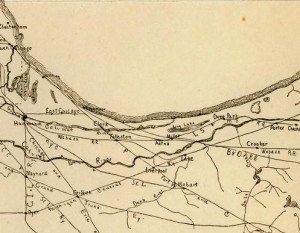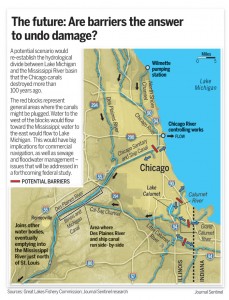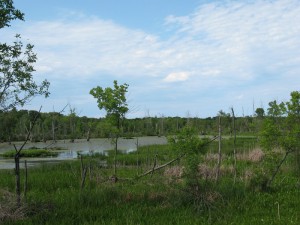
I’ve never been invited to a writer’s retreat before (not to mention a writers and artists retreat), and despite long anticipation and careful planning for this one, I almost didn’t get to go to this one when my spouse took ill and the kids needed tending. Thank goodness for CHN retreat organizer and all-around problem-solver Gavin Van Horn’s wisdom and quick decision-making, as he called me up and said, “Bring the girls along.”
I’m glad I did, as we had a terrific time — and I’m grateful to Gavin’s wife Marcie, who generously and graciously volunteered to watch my children during the times when I was occupied with fellow participants in wonderful discussions about our forthcoming City Creatures project.
For me the retreat had a number of highlights. Some of them were formal, in the sense that they were on the planned agenda — like the splendid hike through the wetlands of the Great Calumet Marsh on Friday led by Ron and Joan Engel, who escorted us along some of their favorite biodiversity-rich trails in the Dunes back-country; the lovely reception hosted by the Engels at their beautiful home in Beverly Shores (which surely has the best home study/library I’ve ever seen); the delightful dinner at Sage restaurant in Chesterton; and the “soundwalk” excursion we took in Gary on the grounds of the Paul Douglas Environmental Learning Center at the western end of the National Lakeshore.
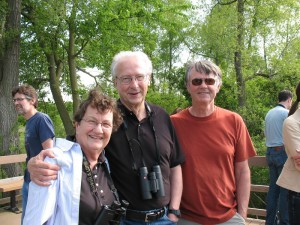
But the less-scripted elements of the retreat held many delights, as well. I became pals with a conservationist and writer I much admire, Stephen Packard, who rode in my car from field site to field site, and delighted my children with his funny stories, endless questions, and brilliant bird call imitations. At one point on our way to the soundwalk field trip, I deliberately got us lost (no, really!) so I could listen to the end of a story that involved “mucking about” a salt marsh on Cape Cod; the ensuing delay was worth it. I met some old friends but also made a bunch of new ones among a group of immensely talented and utterly fascinating people. And I learned a lot about what our collective project is aiming for, and had time and encouragement to think about how my small contribution fits into the bigger picture.

My two girls, Lily (age 10) and Esmé (age 5), had fun cavorting with Gavin’s 5-year-old son Hawkins, and they got a kick out of our field hikes, too. During our marsh walk, we had several great kid discoveries: Steve Sullivan found the mandible of an opossum; Steve Packard found some eggshell fragments, still soft and pliable, from a turtle; and we all admired a large beaver lodge and the abundant nearby evidence of busy-ness on the part of this intrepid wetland mammal and fellow water engineer.
On our Saturday morning hike, I was initially concerned that my chatterbox children would fill the “soundscape” with their songs, stories, and sisterly bickering and thus necessitate my hanging back from the group. Turns out I greatly underestimated them. Lily hiked ahead with the grown-ups, while Esmé and I lollygagged with the renowned naturalist and writer Joel Greenberg, who happily pointed out flowers and identified bird calls for us. Esmé got a nosebleed for no apparent reason, but rather than crying or complaining, she just asked me for tissues until it stopped, and kept trudging along behind Joel and looking at everything he noted.
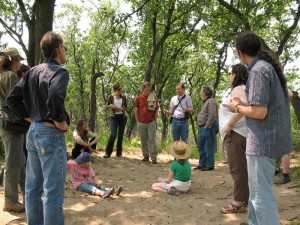
The best part of that wonderful hike was when we ascended a hill about two-thirds of the way along the circuitous trail we were following, and stopped for a long listen. Here in the Dunes there’s lot of sand, of course, and this summit we were on was like a big sandbox. As we naturally formed a circle to listen, observe, and talk quietly about what we were experiencing, the girls just played quietly in the sand.
We watched them, too, and I couldn’t help but think about how our project — about connecting with nature and, more specifically, the non-human animals within the urban and suburban environment of the Chicago region — is also, ultimately, about nurturing an ethic of stewardship and love of nature in our children.

It had been way too long since I had been to the Dunes. This was a splendid excuse to return to that special landscape, and to introduce my kids to some of its treasures. It was also an inspiring way to begin our work on City Creatures.
I’m looking forward to future gatherings with these new friends and colleagues. I wonder what critters, or the leavings thereof, we’ll come across on our ensuing explorations?
